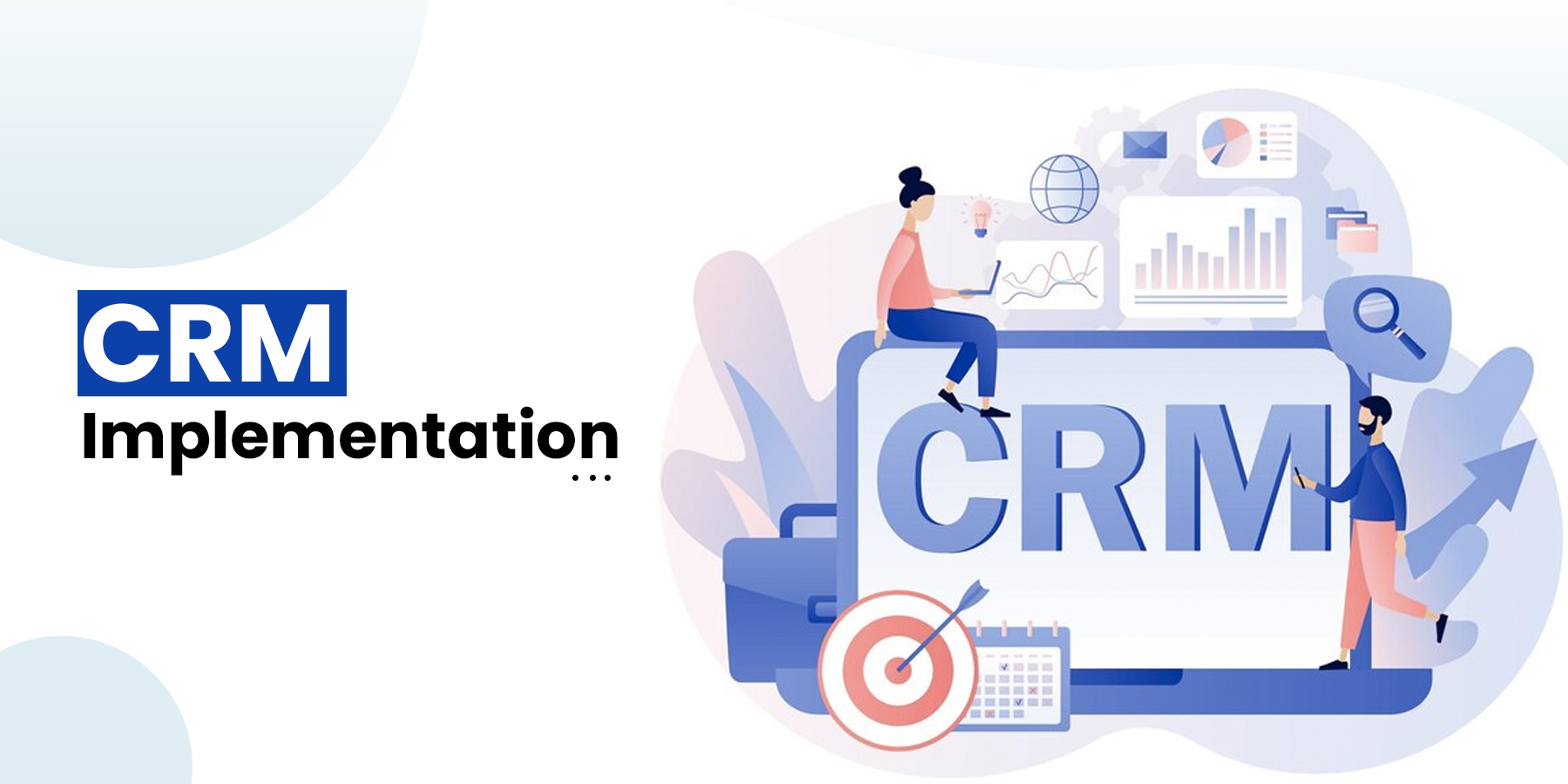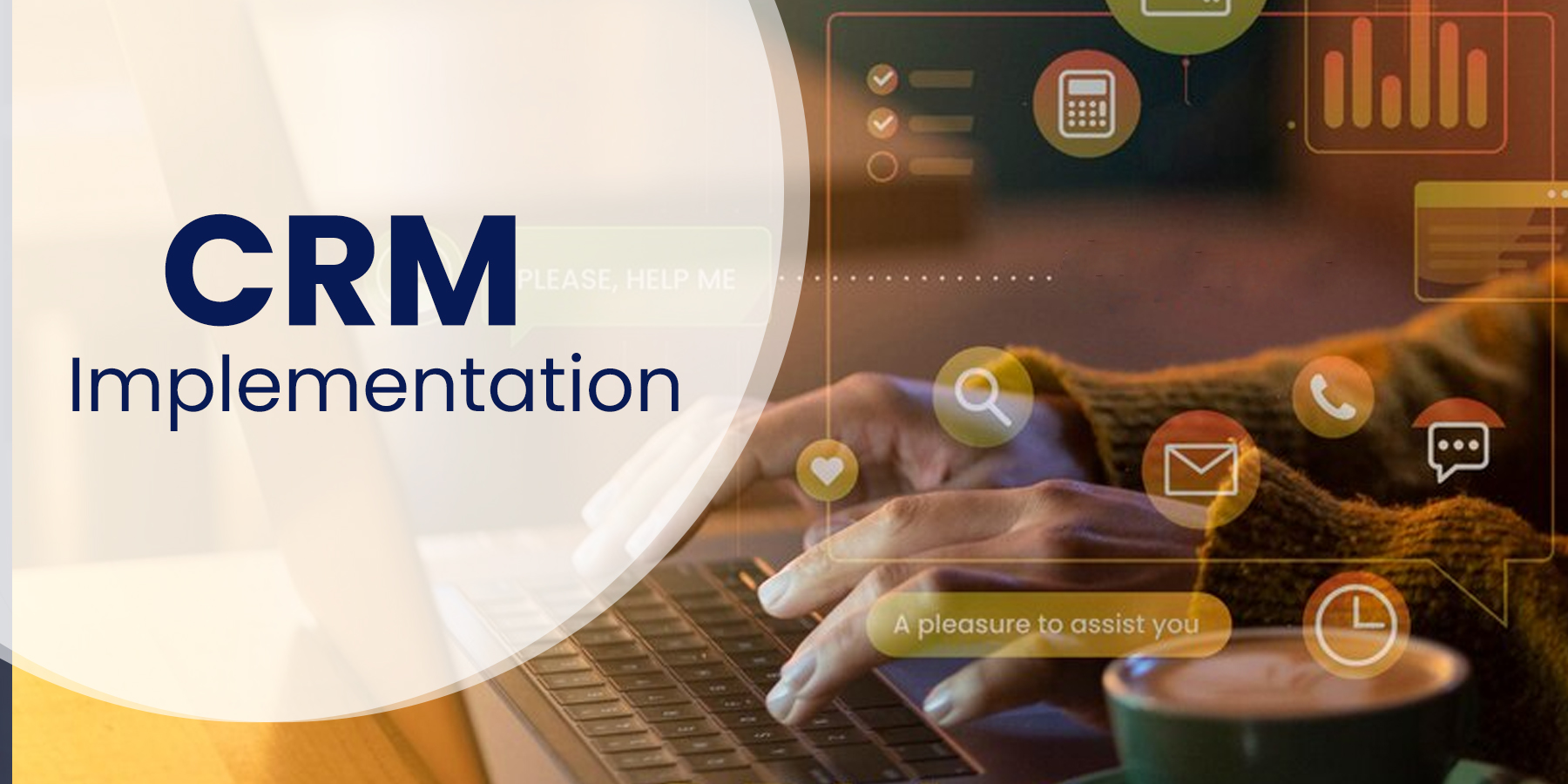Effortless CRM Implementation in 10 Steps
As your business flourishes and customer interactions increase, relying on traditional tools like ledgers, file cards, databases, and spreadsheets becomes inadequate for your sales team. A CRM system (Customer Relationship Management) answers this problem. Although CRM implementation might appear costly and time-consuming, not embracing one can result in missed opportunities and potential risks. Let’s delve into why CRM implementation & customization is essential for thriving in today’s business landscape.
A CRM implementation that is well done brings many advantages. It helps turn website users into customers and keeps your sales team on track with customer inquiries. It makes communication with customers more effective and ensures you understand them better.
Your marketing team becomes more efficient, and CRM implementation improves the overall sales process. With CRM implementation, you can grab advertising and marketing opportunities, among other benefits. More businesses have started using CRMs. But before proceeding, remember there are essential steps to take:
1. Make a List of Important CRM Features You Require
First, you need to decide what features of CRM implementation you want to include in your business. Consider whether you want it to improve communication with potential customers or help with marketing automation. Make a list of the features, and then choose the ones that can be achieved in your business. You can also use CRM consulting services if you need external help with this procedure.
2. Select a CRM Software
Once you know your goals, it’s time to choose a CRM technology provider. Take your time exploring and comparing what each provider offers. Pick a system that meets all your needs without charging you for unnecessary features. To avoid problems like data loss or corruption, do a risk assessment before CRM implementation. You can also transfer a small sample of data first to check if everything works smoothly. If you have a data transfer partner, they can help ensure data quality before the entire transfer.
3. Select Your Team
After selecting the CRM provider:
- Get ready to set up your data and build the CRM implementation team.
- Clean up your current data, making sure it’s correct and complete.
- Consider the data fields you’ll need in the future and plan for them.
- Form a team to manage the CRM implementation & customization. The team can include both in-house and external members.
Essential roles in your CRM team are project manager, data analyst lead, systems engineer, and application developer. Good leadership is vital at this stage to make sure the CRM system is introduced smoothly.
4. Define the Criteria for Your Final Plan
You must set clear criteria for a successful transfer to your CRM system. Choose the features that match your goals the best. Decide how a successful CRM implementation should look for your business, and use that as a guide to set up the entire system. Ensure everyone agrees with the final plan because making changes later can be expensive and time-consuming.
5. Present the Plan to the Organization for Final Inputs
The next important step is to get everyone in the organization on board with the CRM implementation. The project team will present the final proposal to the whole company. One can expect to receive various feedback, even if it’s not always precise or compatible.
Embrace the input because it may lead to creative ideas or highlight unforeseen issues that need attention. It’s crucial to get buy-in from all levels of the organization before CRM implementation.
The inputs of middle managers who understand how their customer-facing teams will use the CRM system are essential. To make this happen, engage in internal marketing, communicate effectively, and highlight the benefits of the new CRM system to your employees.
6. Discuss the Expenses and How They will be Covered
Having the proper budget is crucial at this stage. Before moving forward with the data transfer and potentially involving a data transfer partner, ensure you have a practical budget to cover any expenses that may come up with CRM implementation.
In addition to the subscription charges for partnership providers, there might be other costs, like downtime, training time, and a period of adjustment when productivity may decrease as the team gets used to the new system. Various CRMs offer smooth transitions with dashboards, menus, and features. The time and investment you put into CRM implementation & customization should pay off through new opportunities, better lead conversion, and increased sales activity.
7. Discuss Future Improvements and Long-Term Plan
It’s time to think about the future and innovation. CRM implementation systems have powerful tools to impress customers. Set aside time and resources for future improvements and sustainable growth in your long-term plan. Be open to adding extra features that might be used after a while but could become vital later on. Think like an entrepreneur and maximize your CRM system’s abilities.
8. Roll Out the CRM Implementation
Rolling out the basics of your CRM implementation involves three main stages:
- Test data transfer: Begin by testing the data transfer with a sample of your customer data to ensure everything goes smoothly.
- Systems rollout: Once the data transfer is successful, roll out the CRM implementation’s basic features. Focus on building user adoption as quickly as possible. If you have a CRM solution provider, they should offer Face-To-Face or online training materials to help everyone become familiar with the system.
- Timetable for additional features: Plan the rollout of less routine features, such as marketing campaigns, social media integration, and newsletters, in a well-organized manner.
9. Test Your Implementation
Now it’s time to see how well your CRM implementation worked. Compare the actual results with the success criteria you set in Step Four. If there are any differences, don’t worry! You still need to fully finish the CRM implementation so that you can make changes based on feedback from your teams. It’s common for people to be unsure about change initially, but with time, the new system will become familiar. Your team will soon wonder how they managed without it.
You can judge success based on four main things:
- How well the system integrates
- How much of the plan you completed
- How accurate is it
- If it fits your purpose well
10. Assess and Make Adjustments
Step Nine’s assessment will help you find any needed changes, and involving your team in making decisions is essential. Once you feel confident in the improvements, proceed with the final CRM implementation.
Remember to assess and make adjustments as needed regularly. Keep the CRM implementation team together because they are crucial in refining the system, providing extra training, and supporting internal processes related to CRM strategy. They’ll be a valuable asset in the long run.
Conclusion
CRM implementation is essential for modern-day businesses looking to thrive in a competitive landscape. With a well-designed CRM implementation & customization, businesses can reap numerous benefits, such as converting website visitors into customers, improving communication with clients, and gaining a deeper understanding of their customer base.
By following these ten steps to success, you can expect significant benefits, including a 65% increase in sales, a 74% improvement in customer relationships, and 27% enhanced customer retention. However, remember that successful CRM implementation requires considerable effort and investment.
If you’re looking to implement a CRM system successfully and need expert guidance, don’t hesitate to contact Vgrow for support. With a track record of proven implementation practices, their team of CRM solution providers can provide the assistance you need to make the most of your CRM investment.
This blog is inspired by the video, ‘10 Steps for Successful CRM Implementation’ by ‘Neighbourhood.’

Nandhini A
Nandhini A, with over 15 years of experience, currently serves as a Relationship Manager at Recruit Ninjas. Her expertise includes driving business process success, leading operations, and team development. She excels in optimizing efficiency and productivity, driving sales, and fostering high levels of customer satisfaction and retention.




